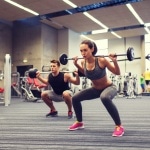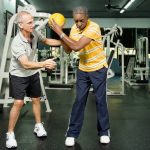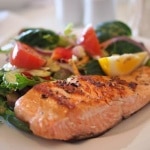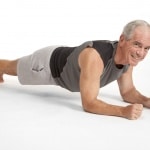In the past 15 years or so, much research has been done on the topic of nutrition and resistance training – what to eat, how much to eat, and when to eat…or supplement. Most of these studies have looked at young male athletes, leaving out a large segment of the population – women, the elderly and female and elderly athletes.
Athletes of both genders and of all ages are believed to need more protein than non-athletes although traditional dietary guidelines don’t seem to factor in those needs despite the research.
For the most part, the national guidelines for nutrition are satisfactory for the majority of people who are basically like the majority of people: sedentary. Thus most government and health- and disease-related organizations ascribe to a protein recommendation of 0.8 g/kg, or about 0.4 g/lb, per day, spread out throughout the day. (That is, not consumed all at one time.)
Way back in my grad school days, in the 1980s, the Soviets and Eastern Bloc nations had their athletes consuming way more protein than did the Western nations. The former were dosing their jocks with more than 2.0 gk/kg/day. By the 1990s, American athletes were consuming 1.2-2.0 g/kg – depending on what the sport is. Cardio sports were considered less dependent on protein for fuel than were strength sports. However subsequent studies found that even aerobic athletes benefitted from some extra protein – 1.2-1.4 g/kg. The higher doses were left for big, strong jocks like football and weight lifting.
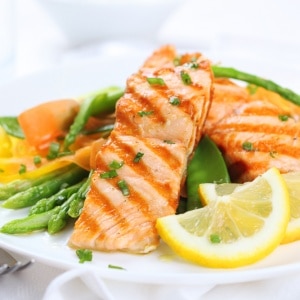
But not all jocks are equal, not just in gender but in age, and with the aging population, that has fostered a new set of concerns: do older people need more protein than younger?
Furthermore, do older athletes need more protein than their younger counterparts especially if they do some of the same kinds and intensities of exercise?
A recent study in the British Journal of Sports Medicine was undertaken to answer this question. It was reviewed by the NY Times last week and it showed that older folks, that is, those over 40, can get stronger and bigger muscles by consuming more protein.
In other words, if older folks lift weights sufficiently heavy enough to get big and strong, they could benefit by doing what younger folks do – by eating more protein per day than their sedentary peers: 1.6 g/kg/day or 0.7 g/lb/day. That is, double what normal folks need.
Why? Not only because they are athletes but also because, as most of us over 40, especially 50, understand, we are losing muscle mass just by being over 40. I’m not convinced it’s the rate of loss that most studies point to was determined via cross sectional studies where they measure the muscle mass of people of all ages and genders at one point in time. True longitudinal studies are needed to determine the actual rate of muscle loss due to aging.
We do know that staying in shape especially by doing muscle building exercise will slow the rate of loss down. What we don’t know is what, exactly, one needs to do to really slow it down. But now we have a better idea of how much protein we need while doing our resistance training to both build and slow down the aging-related muscle loss that otherwise would occur.
It’s not easy to get it all in there, though, so supplementation may be called for. But if you’re serious enough about taking care of yourself such that you’ll do the work that needs to be done, what’s a few extra cuts of low-fat meat or dairy product, especially if it’s going to help you manage appetite – which protein does – and control body fat gain while enhancing muscle mass gain.
As I’ve written about many times here, here and here, get in more protein somehow…but start lifting weights now!



